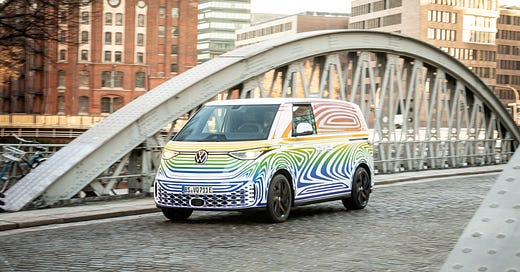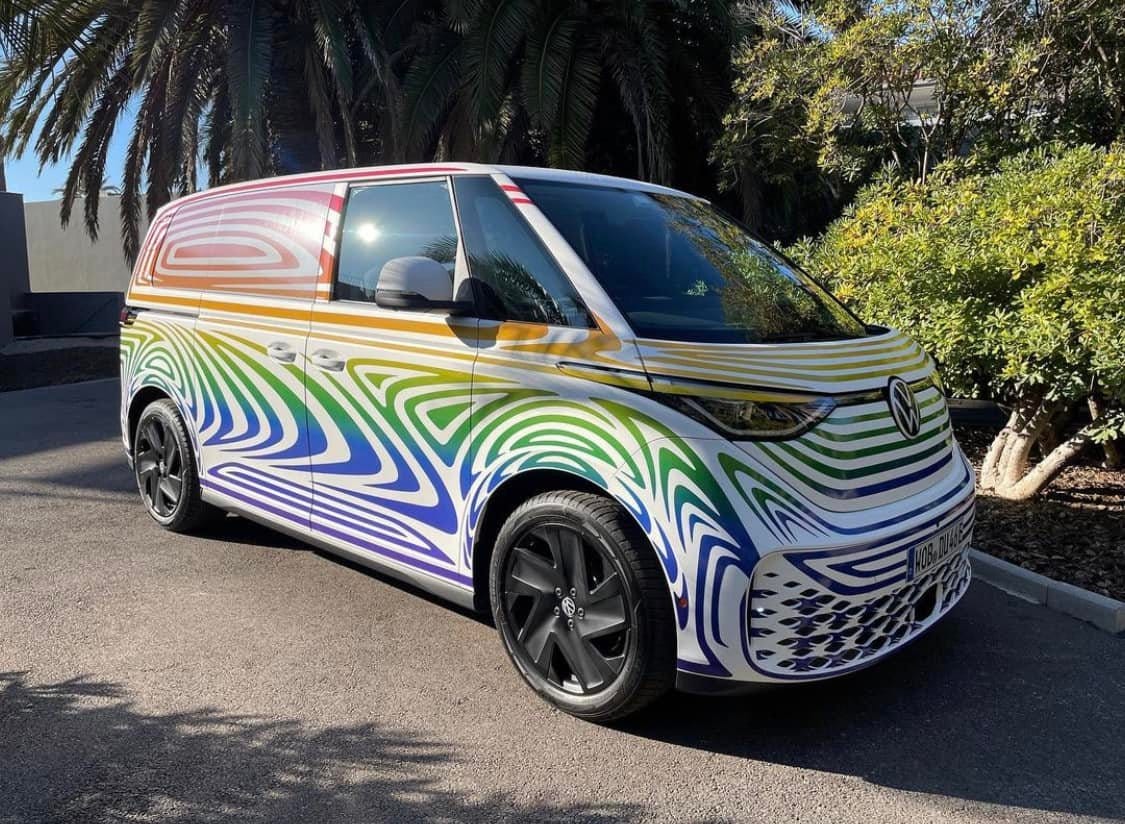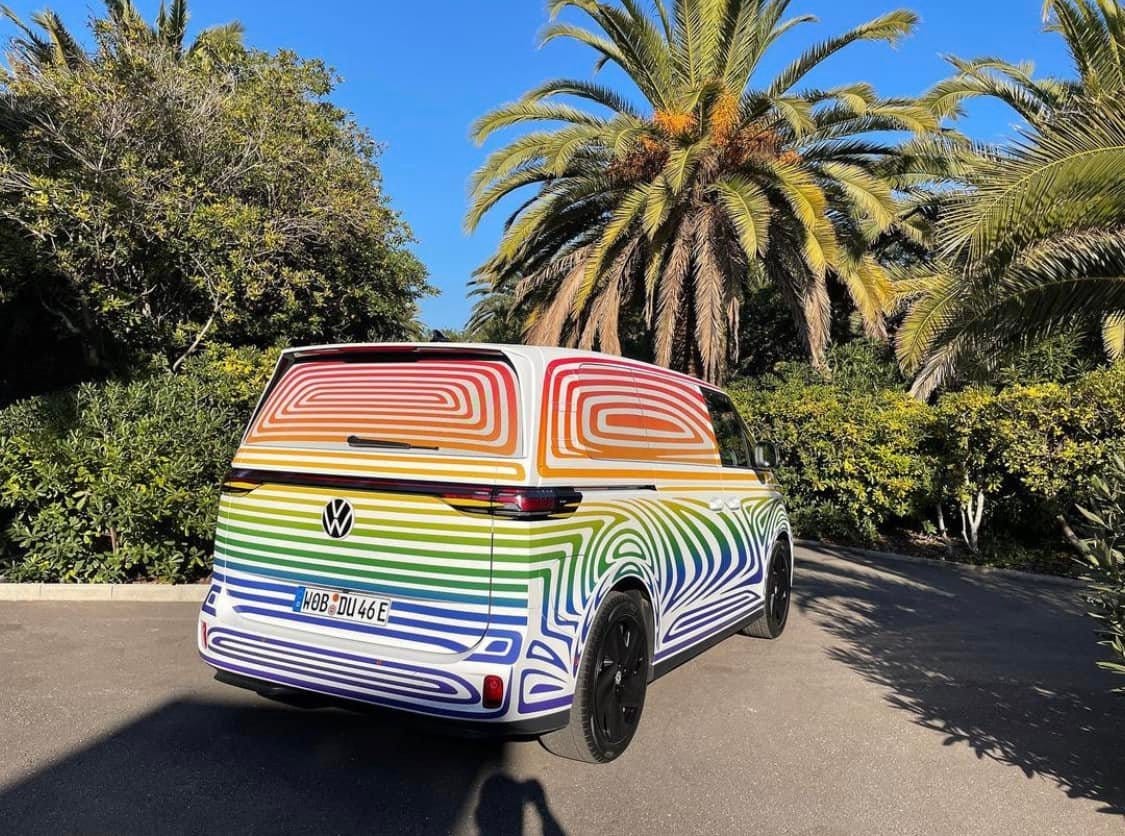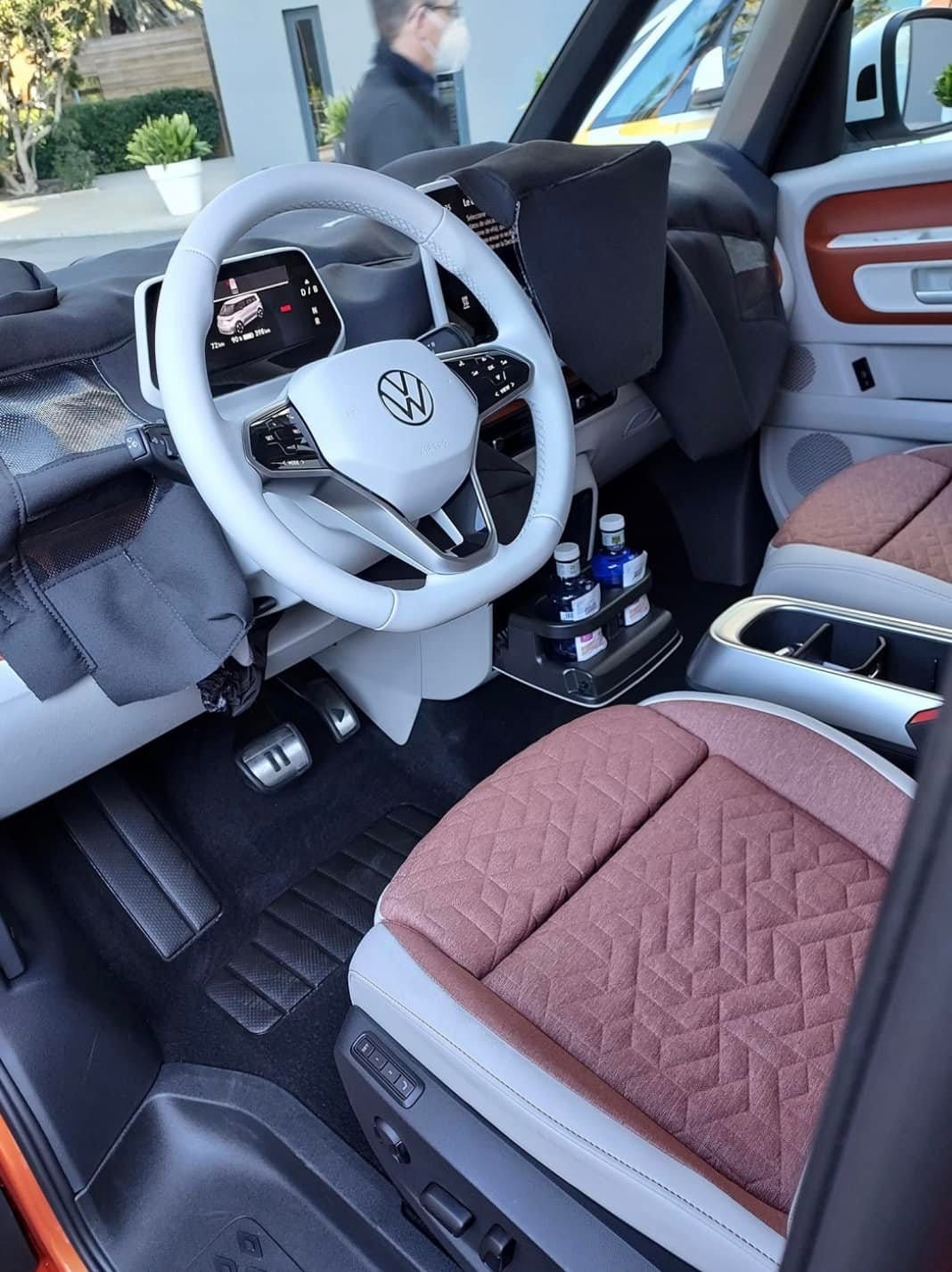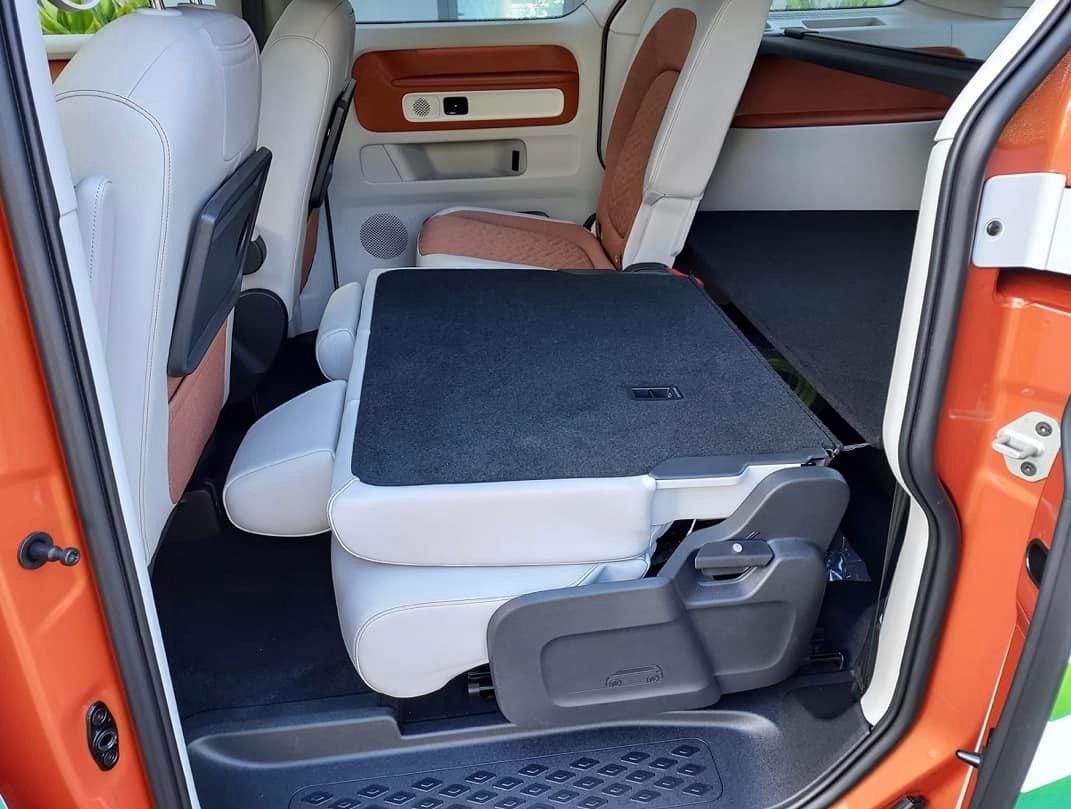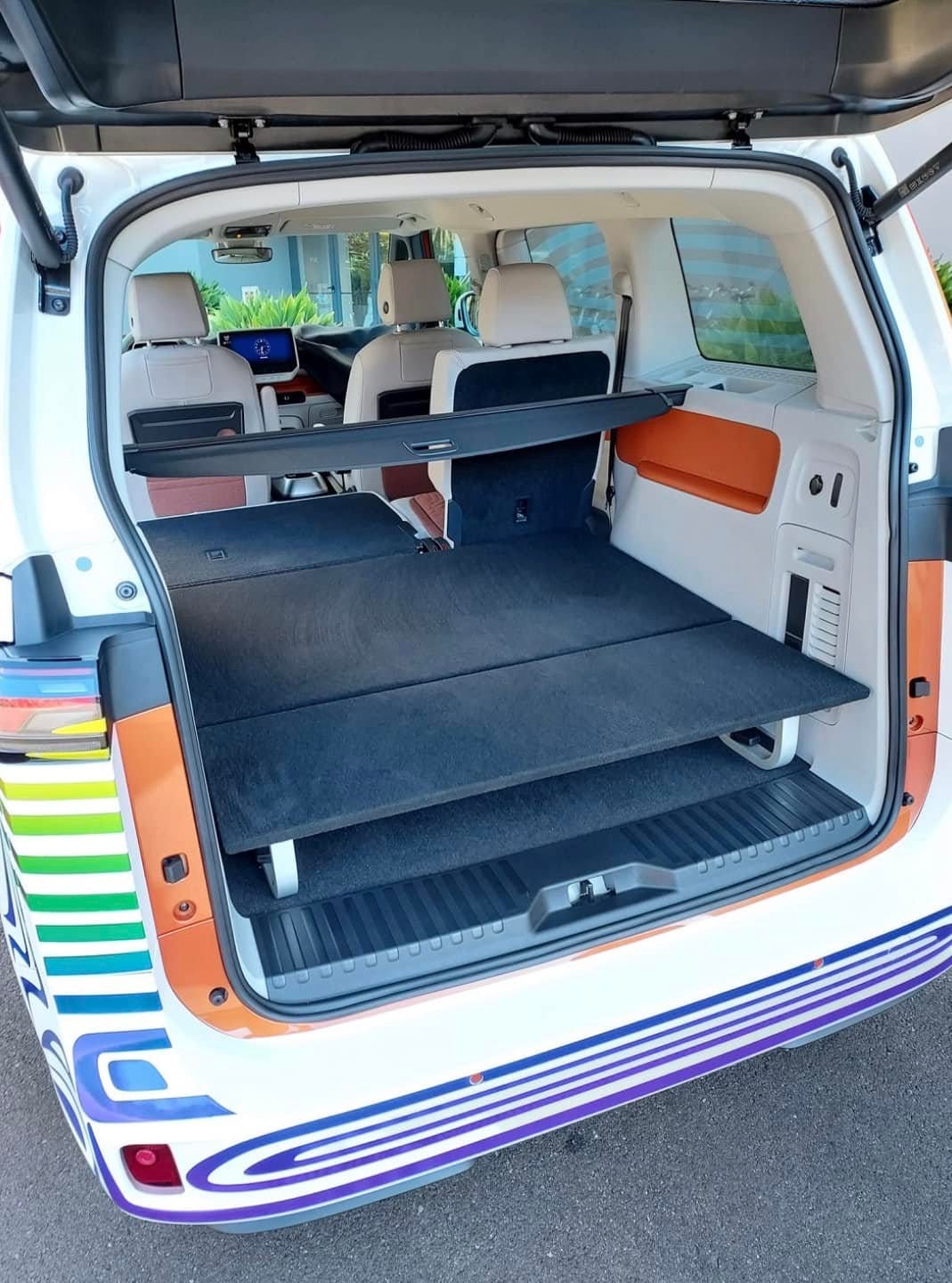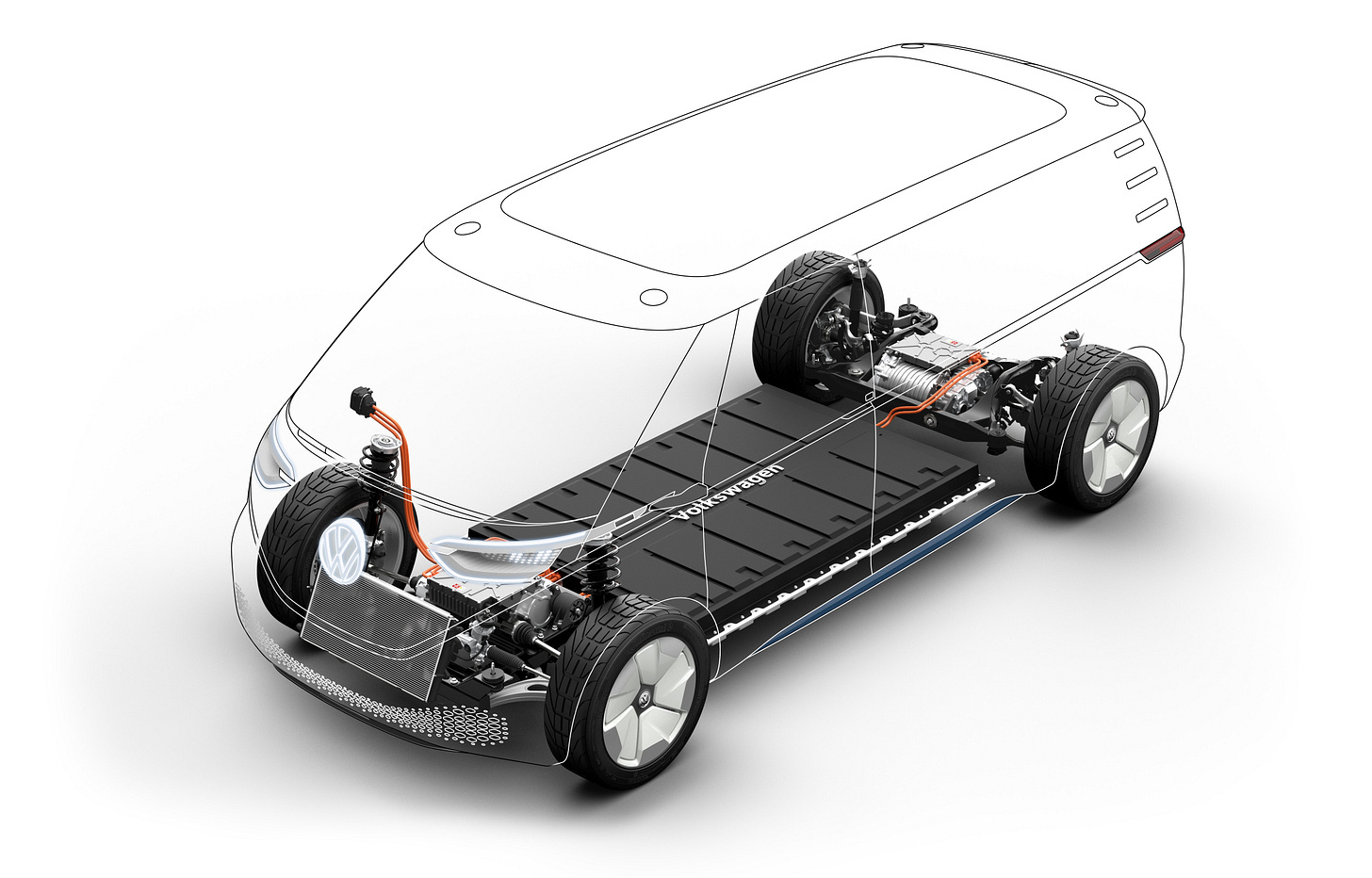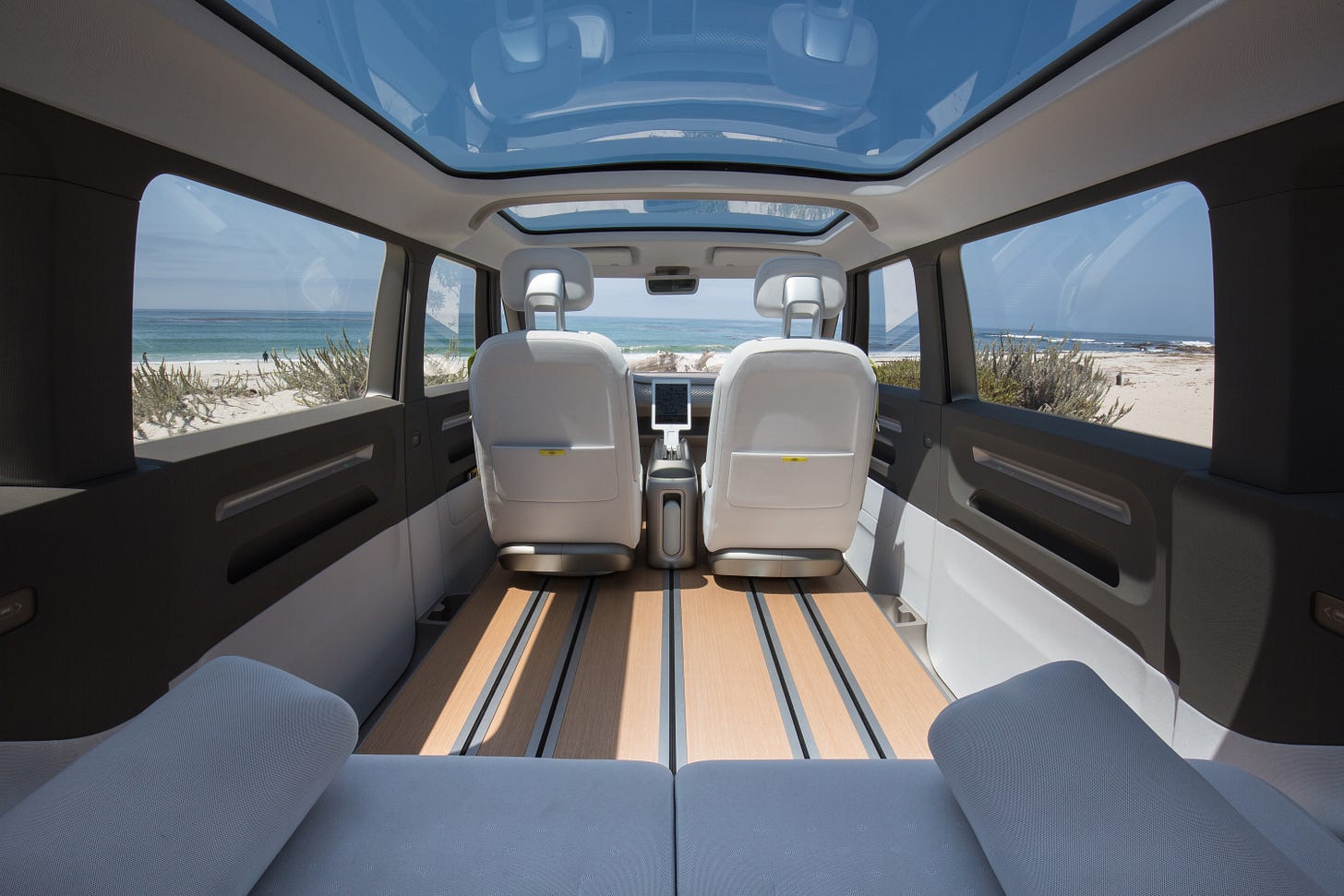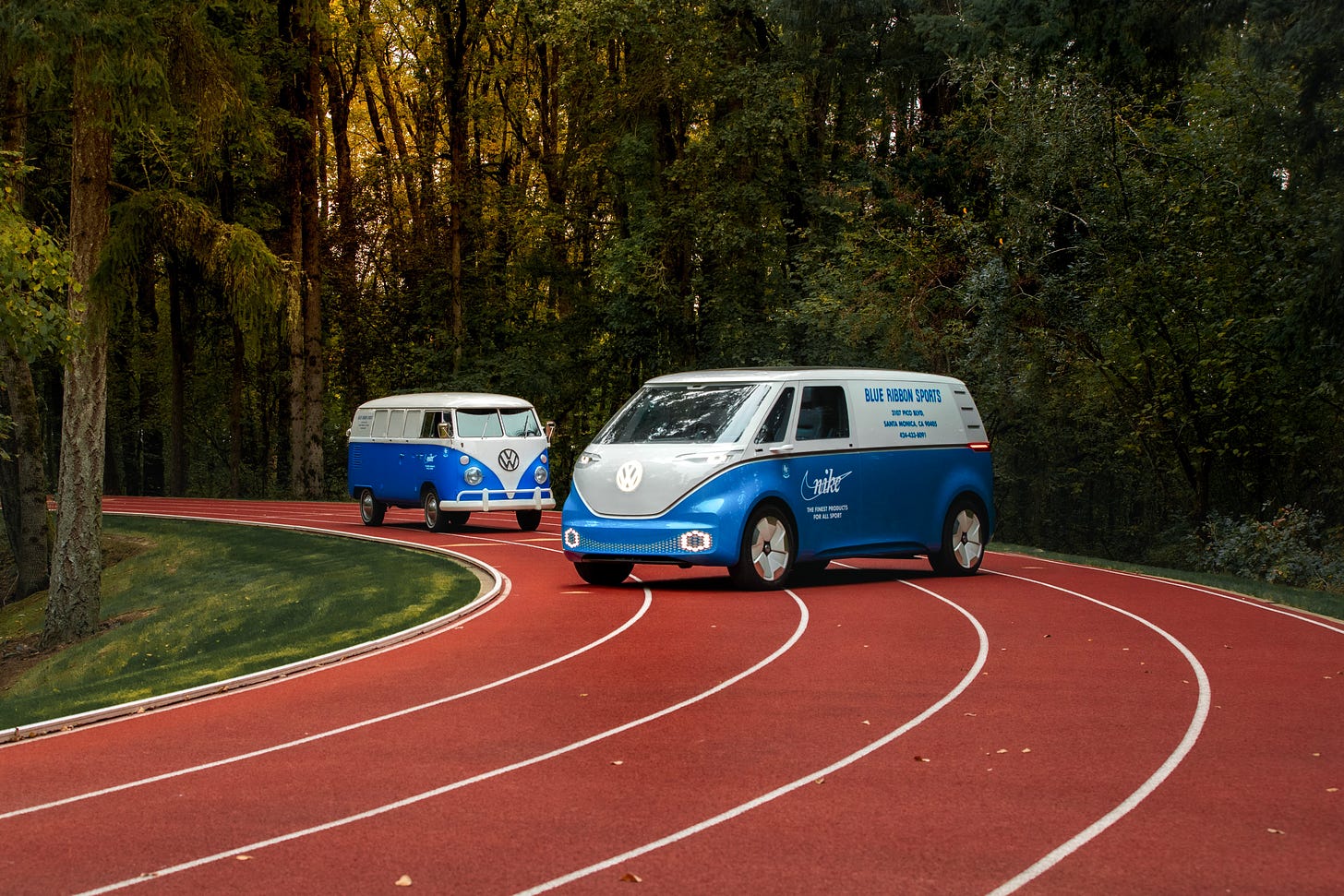⚡️🔋Current Events 2/8/22: We're gonna need more banana boxes, the VW Kombi makes an all-electric comeback as the ID.Buzz!
Approaching the new era of the Volkswagen ID.Buzz.
Good morning folks, welcome back to another Ronin Dispatch! Today we’ll be taking a pre-launch look at the new Volkswagen ID.Buzz, the familiar minibus concept that VW decided to bring back to life using it’s all-electric MEB platform.
Unlike almost all the Dispatches so far, this one feels personal. In the 1970s, in the Brazilian state of Espirito Santo, the original Volkswagen Type-2 or “Kombi” as it was known, was the work vehicle of choice for my great grandfather’s hardware shop. The shop still operates today, but back then one of the more important services it provided locally was coil repair and replacement for electric motors. These were industrial motors used for work in contexts ranging from agricultural equipment to quarry equipment essential to the local marble industry. To get the clients’ motors to and from the shop, the employees and my grandfather always relied on the trusty utility of the shop-branded Kombi.
Beyond performing admirably for the family business, the Kombi was simply an icon within Brazilian culture itself. You could not walk around any given beach or neighborhood in Rio de Janeiro and not see one. Variety shows would even hold large prize competitions to see how many people could fit inside a Kombi. Even today, restored 1970s models are available for rent for tourist journeys along the coastal roads.
For me, the mental image of sitting in the driver’s seat, hauling my own young family around for soccer matches in the all-electric ID.Buzz simply smacks of destiny. I’m always excited to drive a new EV, but the anticipation I feel for the vehicle’s upcoming product launch on March 9th is on a completely different level.
While we don’t know the exact specs of the vehicle yet, Volkswagen has dropped a lot of breadcrumbs that allow us to hypothesize what this thing can do. There is obviously a lot we don’t know and a lot that we can only speculate about. That said, let’s jump in and take a look at what may come in March.
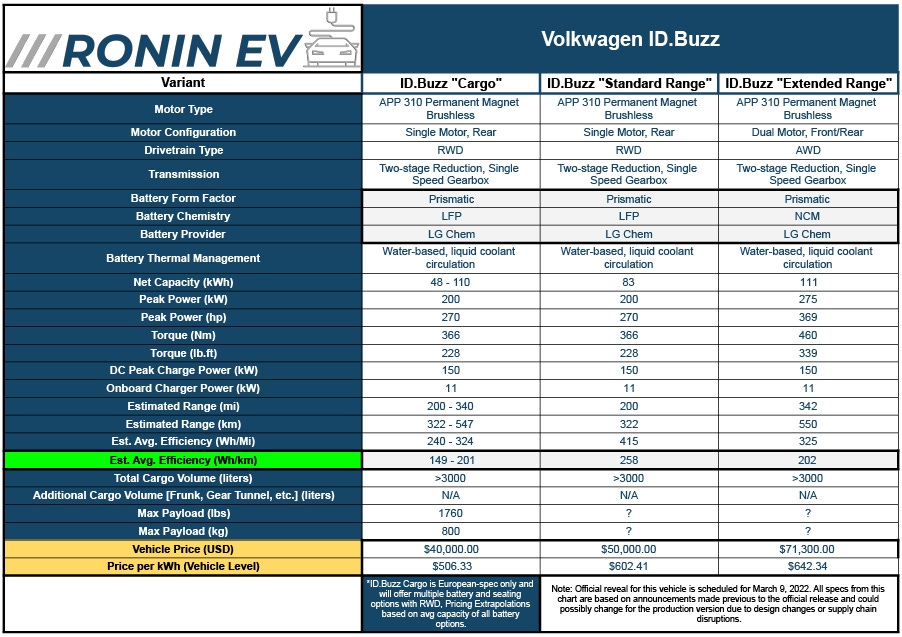
Let’s start with the part Volkswagen is doing the worst job trying to keep secret, the exterior. The concept versions demonstrated so far indicate VW will be going with two-tone color options. Built with both cargo and passengers in mind, making this thing as light and aerodynamic as possible is paramount. This minibus design is all about the bevel. If the Tesla Cybertruck is an attempt to insert as many hard-edged angles into a design as possible, I would call this vehicle the diametric opposite. It’s a highly convenient circumstance for VW that their original Type 2 design happens to be a useful starting shape for an EV remake, round in all the right places.
The headlights connect across the whole front by crossing behind the VW badge. The taillights are beveled clubs, connected through a thin streak of red across the back hatch. The front grill, which is functionally useless for EVs, is absent because even the original Type 2 didn’t have one - it’s naturally aspirated engine was rear mounted, which is why it had so much space in the first place. VW is going a step further by using the MEB platform to bring all drive components below the floor. Nonetheless, we are weirdly disappointed to report that the ID.Buzz definitely has no room for a frunk. Given the visual evidence, it’s clear it’s almost all electronics, wiring, and HVAC components in there.
The passenger version appears to have slide doors on either side of the vehicle, whereas the Cargo variant is configured with only passenger side door and a two-door rear hatch. As is expected in a van, the amount of window space and visibility around the car is excellent. The charge port will likely be available on the back right of the vehicle, similarly to the ID.4.
The interior configuration for the passenger version seems to be able to go up to 7 seats based on some of the event photos available. Depending on the length of the vehicles, the customer will likely have a configuration option of choosing between two and three rows. The shorter, 4.7 meter variant would likely only allow the 5 seater or Cargo configurations. Meanwhile, a longer variant, expected in 2023, would be able to accommodate up to 7 seats by adding another 30 cm to the design. The interior style seems very poppy and aligned with what they’ve produced in the ID.3, ID.4, and the now in production ID.5 in Europe. The only option revealed so far is this somewhat beige and sandstone, two-tone interior.
Both rows of rear seats presumably fold flat to allow maximum storage from the trunk all the way to the console between driver and front passenger. Without revealing full information on the car’s cargo volume, VW has stated that the Cargo version would have a maximal payload of 800 kg (1760 lbs) in the rear. That number is comparable to the capacity of F-150 Lightning’s bed (2000 lbs).
Looking into the specs, it appears that VW will be offering a variety of battery pack options for the Cargo. From the announcements, the passenger variants will come in two battery options, a standard version and a long range version. While VW has suggested the pack options to be 83 kWh and 111 kWh in the some of their communications, the more recent conflicting reports have indicated they may be looking at a smaller capacity range with options of 60 kWh and 100 kWh available to customers. At 60 kWh, the more affordable variant would provide customers with 300 km of range, which is rather low for a family van. However, as we are still waiting for the launch I’ll refer back to the words of Zen Master, “We’ll see.”
Peak charge power is also a relatively low 150 kW. Given the production timeline, we hope to se them improve upon this number. Thermal management at high charge power with a battery pack as large as 100 kWh in capacity should not be beyond these engineers, especially for a 2024 model year. If a 2018 Model 3 with 25% less total capacity is able to charge at 200 kW, Volkswagen has some work to do.
We have yet to find out anything about the specific cell chemistry that VW has chosen for this vehicle, but it’s possible that they decide on prismatic cells as opposed to the pouch cells they’ve used for the ID.4 and ID.3. Their battery investment presentation last year suggested that they are developing pack designs that will allow them to select chemistries based on price point and use-case, i.e. lithium-iron-phosphate chemistries for lower range more affordable models, and nickel-rich chemistries for higher energy density applications. Make no mistake, the EV leaders of the future will be only be successful at scale based on how well they handle battery supply constraints as they ramp production for the more affordable market segments. This will surely be VW’s challenge too and it appears they are planning precisely for this future. That said, I’m looking forward to hearing about their choice for this model’s battery pack design.
Lastly, let’s quickly go over what we know about launch options and pricing. The first generation - rumored to be released September 2022 - will begin deliveries in Europe, with North America likely following suit in 2023. Those first months of deliveries will only include the Cargo and the RWD Passenger variants. Latest reports from Germany suggest that VW will be offering either the Cargo or the Passenger at just under €60,000 at launch (~$68,583 USD); although it’s still unclear which one is being offered at this price. Last year, there were claims of VW meeting a $40,000 USD price point for the Cargo version so, perhaps, we are seeing the impact of both inflation and supply constraints on VW’s ability to deliver on affordability. Either way, a wide range of prices has been reported for this car since the concept announcement, so here’s another friendly reminder to take our chart with a few grains of salt.
All in all, March 9th cannot come soon enough. I am unbelievably excited about this car and will be watching with great anticipation. You can expect a new dispatch the day after with information breaking down what I learned from the launch event.
Thanks for reading. Don’t forget to subscribe, share, and let us know your what you’d like us to dive into next time. Look forward to the next Ronin Dispatch and have a great rest of your day!
Many thanks and stay safe,
Renato
Renato A. Amboss is the Founder and First Pilot of Ronin EV. The thoughts and opinions expressed here are his own. None of the views expressed are intended as investment advice of any kind and should not be taken as such. Cars are not investments, but we would love to show you what electric ones can do! Have a lovely day!

